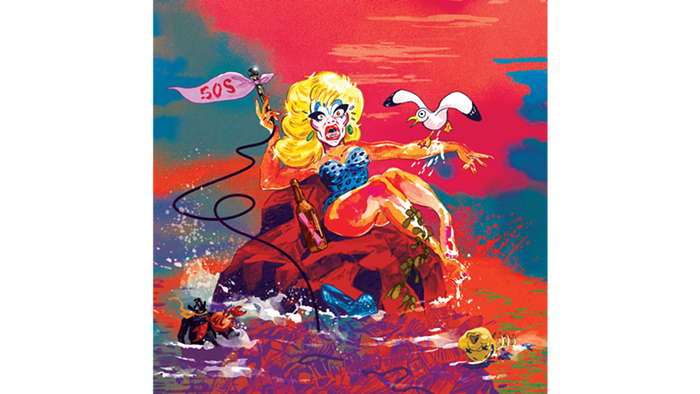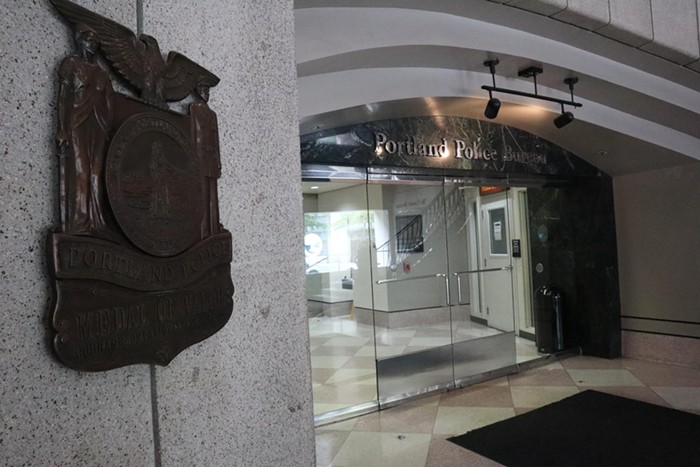Whether atmospheric or human caused, Oregon has become adept at mixing the perfect cocktail for a growing wildfire problem. So what’s in store for wine grapes, one of the state’s ten most lucrative crops?
I lean towards pessimism (although I like to call it realism), so after choking on smoke for a couple of summers and seeing grim climate report after grim climate report, my inclination was to say WE’RE ALL DOOMED. Two industry experts, however, have a surprisingly positive outlook when it comes to the future of Oregon wine.
Greg Jones examines the intersection of viticulture and climatology, and is one of the country’s leading minds in the field. Jones was formerly the director of the Evenstad Center for Wine Education at Linfield University, and was instrumental in its launch. He was appointed CEO of his family’s winery Abacela in August 2021.
Jones points out that folks in other parts of the world have dealt with wildfires causing impact on wine grapes and other agricultural crops, so there are examples we can learn from. “The Aussies have done a lot of the baseline research to try to better understand, if you have smoke from a fire, what are all the characteristics that potentially challenge growing grapes and making wine,” says Jones in a phone interview with the Mercury.
Smoke taint might not even be as catastrophic as we think it is; some of Oregon’s wildfire-affected vintages have been awarded high scores by Wine Enthusiast and Wine Spectator.
In recent years, the United States has joined that research effort, looking into the broader issues (*cough* climate change) that spawn wildfires, and developing fire management plans for the future.
Smoke damage to grapes typically only occurs when a fire is in close proximity to a vineyard, so smoke that carries over from out-of-state fires that are perceptible to humans don’t necessarily cause damage to grapes. This is because smoke from distant fires isn't fresh, and therefore has different compounds than a “freshly burning” one.
“Faraway smoke in the mid-levels of the atmosphere can be very problematic, but it’s less problematic for crops and more problematic for people’s respiratory systems,” Jones says. He explains that smoke needs to actually permeate a vineyard for it to have an impact, and that the extent of the impact is still hard to tell.
The ramp-up of research to match the pace of the growing wildfire threat has led to the development of test kits that can determine the presence of chemicals such as guaiacol and 4-methylguaiacol, which are associated with “smoke taint” and might cause a wine to taste bitter or medicinal. Since tasting notes in wine are highly subjective, scientists have the difficult task of trying to determine a baseline indicator that signifies a highly discernable decline in flavor for a majority of drinkers. Tigard company Sunrise Analytical offers smoke impact testing that winemakers can use to detect volatile compounds in whole fruit or juice samples, but neither this tool nor its results have the ability to predict wine quality or flavor. On the plus side, smoke taint might not even be as catastrophic as we think it is; some of Oregon’s wildfire-affected vintages have been awarded high scores by Wine Enthusiast and Wine Spectator.
What is more concretely understood is that Oregon’s terroir—the combination of factors such climate, soils, and terrain that give wine its unique characteristics and flavor—will be affected. We are gradually shifting from an intermediate climate type to a warm one, with growing seasons growing warmer and longer than they used to be. While the rising temperature is still conducive to growing Oregon’s signature pinot noir, the style of the wine might change. Cooler climates result in lighter-bodied subtle wines with higher acidity, while warmer climates produce fuller, deeper-colored wines that have a higher alcohol content.
In 2020, which Jones describes as the worst year the industry has ever seen and ever might see, scores of vineyards didn’t harvest their fruit. Since our climate is moving towards being more suitable for growing varietals that thrive in warmer temperatures such as malbec and syrah, Jones suggests vineyards dedicate a small plot to experimenting with grape varieties that aren’t necessarily suited for the current climate, but may be in the future.
Nichole Schulte, assistant winemaker at Quady North in Jacksonville, Oregon, also thinks we could see a shift in the types of wine that Oregon produces. “Pinot noir is so susceptible to smoke impacts because the structure of the wine is light in body and the skins are thin, so smoke is more likely to infiltrate the grapes, get into the pulp, and then make it into the final wines,” she says. “There are varietals out there that are more hardy and they stand up to those wildfire events. For example, a syrah grape naturally has compounds in it that are the same compounds one would consider smoke taint in pinot noir.”
As for more immediate solutions, there are myriad things winemakers can do to curb the effects of smoke in terms of both vineyard management and during the winemaking process. At the front end, vineyard managers may trim back vegetation (thereby eliminating fuel sources), experiment with canopy management and trellising, or even plant different ground covers that will protect vines. On the winemaking side of the equation, winemakers can use techniques such as adding yeast to play up sweetness, or selecting French oak barrels that will counterbalance smoke characteristics. Alternatively, they might opt to make rosé, which requires a gentler pressing and minimizes skin contact where smoke may linger, or get creative and make new red blends.
“The industry in Oregon is really collaborative… and we are very hopeful that we can find creative solutions,” says Schulte.
Schulte is part of the West Coast Smoke Exposure Task Force, which was formed in 2019 and includes academics from West Coast universities, plus winegrowers and winemakers from Oregon, Washington, and California. The task force’s objectives include coordinating industry efforts, shoring up resources, educating winegrowers on crop insurance, and lobbying Congress for funds to back research. Oregon State University’s Department of Food Science and Technology has conducted sensory analysis studies, and grant money has also allowed them to increase testing and other analytical services which they’ve made available to Oregon’s wine industry. These are things that didn’t exist just one to two years ago, according to Schulte.
Sixty-two percent of growers reported impacts from the wildfires, with 18 percent stating that they detected an ashy taste in their 2020 vintage.
As a result, organizations like the Oregon Wine Board and the Oregon Winegrowers Association have hustled to increase communication between winegrowers and winemakers and issue best practices; the wine board has even created an online wildfire smoke toolkit for winemakers. The board also commissioned the University of Oregon’s Institute for Policy Research and Engagement (IPRE) to produce a report on the impacts of both wildfires and COVID-19, which was released last month. Findings show that 62 percent of growers reported impacts from the wildfires, with 18 percent stating that they detected an ashy taste in their 2020 vintage.
One encouraging development born out of last year’s wildfire event is the implementation of an OSHA temporary rule on protection from wildfire smoke, which went into effect in August. The rule provides a series of guidelines for employee training, communicating air quality hazards, and the use of respirators when necessary. “In the past, the health and safety of vineyard workers wasn’t on the radar for lawmakers and wineries,” says Schulte. “We can’t take for granted the people that are tending to the vines because the wines really are expressive of those people.”
Although winemakers are dealing with these and other obstacles, Schulte cites the potential of losing consumer confidence as a major challenge in her craft. “One of my worst fears is that a consumer sees a vintage on a bottle and they just don’t buy it because there was a smoke event that year,” she says. “That’s really unfortunate because there are so many creative people doing things with wines to make them delicious.” She stresses that smoke exposure does not necessarily equate to bad wines.
So rest assured, even though we’re pretty much living the “This is Fine” meme, we’ll still be enjoying fine Oregon wine in our glasses ‘til the very end.













